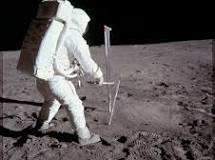The Fascinating World of Outer Space Exploration
Outer space, the final frontier, has always captivated the human imagination. The quest to explore the vast expanse beyond our planet has led to incredible discoveries and pushed the boundaries of human knowledge.
The History of Space Exploration
Humans have been fascinated with outer space for centuries. From early astronomers gazing at the stars to the first manned missions to the moon, our journey into space has been a testament to human curiosity and ingenuity.
Modern-Day Space Exploration
In recent decades, advancements in technology have allowed us to explore outer space like never before. Robotic spacecraft have ventured to distant planets, moons, and asteroids, sending back valuable data and images that have expanded our understanding of the universe.
The Future of Space Exploration
As we look ahead, the future of space exploration holds even more promise. Plans for manned missions to Mars, ambitious space telescopes that can peer into the depths of the cosmos, and private companies venturing into space tourism are just a few examples of what lies ahead.
The Importance of Outer Space Exploration
Outer space exploration not only satisfies our innate curiosity but also has practical benefits for life on Earth. Technologies developed for space missions have led to advancements in various fields, from medicine to environmental monitoring.
In Conclusion
Outer space exploration continues to inspire awe and wonder in people around the world. As we push further into the cosmos, we uncover new mysteries and possibilities that challenge our understanding of the universe and our place within it.
Exploring the Final Frontier: FAQs About Space Exploration
- Is the US still exploring space?
- What are the four types of space exploration?
- How much of outer space has been explored?
- What are 5 facts about space exploration?
Is the US still exploring space?
The United States remains actively engaged in space exploration, with ongoing missions and programs that showcase its commitment to advancing our understanding of the cosmos. From collaborations with international partners on the International Space Station to ambitious plans for manned missions to the Moon and Mars, the US continues to push the boundaries of space exploration. NASA, as the primary agency responsible for US space exploration efforts, is at the forefront of cutting-edge research and innovation, ensuring that America’s presence in space remains strong and forward-looking.
What are the four types of space exploration?
Space exploration can be broadly categorized into four main types: robotic exploration, human spaceflight, commercial space ventures, and scientific research missions. Robotic exploration involves sending unmanned spacecraft to explore distant planets, moons, and asteroids. Human spaceflight refers to missions where astronauts travel to space to conduct experiments, maintain spacecraft, and push the boundaries of human endurance. Commercial space ventures focus on private companies entering the space industry for activities such as satellite launches, space tourism, and resource mining. Scientific research missions aim to study various aspects of outer space, from understanding cosmic phenomena to searching for signs of extraterrestrial life. Each type of space exploration plays a crucial role in expanding our knowledge of the universe and paving the way for future discoveries.
How much of outer space has been explored?
The question of how much of outer space has been explored is a complex one. While significant progress has been made in exploring our solar system and beyond, the vastness of outer space means that only a tiny fraction has been directly observed or visited by spacecraft. Humanity’s reach extends to planets, moons, asteroids, and comets within our solar system, with robotic missions providing valuable data. However, the majority of outer space remains uncharted territory, with countless stars, galaxies, and other celestial bodies yet to be explored. The quest for understanding and discovery in outer space is ongoing, with each new mission and observation adding to our knowledge of the universe.
What are 5 facts about space exploration?
Space exploration is a topic that never fails to intrigue and inspire curiosity. Here are five fascinating facts about space exploration: First, the iconic Apollo 11 mission in 1969 marked the first time humans set foot on the moon, with astronauts Neil Armstrong and Buzz Aldrin making history. Second, the Voyager 1 spacecraft, launched in 1977, has traveled farther from Earth than any other man-made object and continues to send valuable data back to scientists. Third, the International Space Station (ISS) serves as a remarkable collaboration between multiple countries, where astronauts conduct experiments and research in microgravity. Fourth, the Mars rover missions have provided valuable insights into the Red Planet’s geology and potential for past microbial life. Finally, ongoing advancements in space technology continue to pave the way for future missions to explore even more distant corners of our universe.

